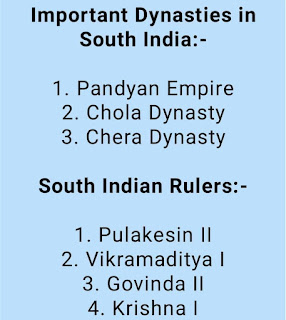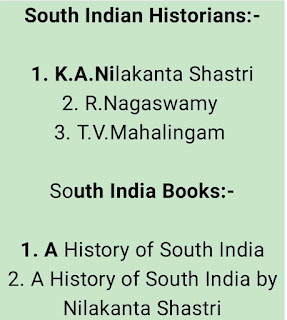Table of Contents
History of South India
Tags: important dynasties of south India, Mughal empire in south India, south Indian rulers, political history of south India, south Indian historians, history of south India books.
In the history of South India, many dynasties have constructed important monuments and palaces in different parts of the country.
They not only fought for themselves but also for others.
In this article, you will understand the whole History of South India, Important Dynasties, South India Ruler, and many more. So stay till the end.
Important Dynasties of South India
South India was always known for building very tall and very old structures.
Apart from this, the Dravidians were famous for their great sculptures of the temples and for building other structures.
They constructed very Beautiful and Impressive Monuments.
The Tamil Nadu state government is proud of the fact that they have built a temple for the god Brahma. Who is considered the creator of the universe.
The next biggest Indian empire, the Marathas also had a great influence on South Indian history.
Many great temples were constructed by the Marathas, which have earned them a lot of honor along with a place of worship.
 |
Important-Dynasties-South-Indian-Rulers |
Let us read about some Dynasties and Empire of South India
1. Pandyan Empire
Even the Pandya dynasty, also referred to as the Pandyas of Madurai, has been a dynasty of south India,
among those three-star Tamil lineages, another two being the Chola and the Chera.
The ancient Pandya chieftains ruled their country (that the Pandya Nadu) from time immemorial. It is comprised of the northeast town of Madurai and the southern part of Korkai.
The country of this Pandyas finds mention in quite a few graeco roman sources (as soon as 4th century BCE) along with the edicts of all Maurya emperor Asoka (3rd century BCE)
Pandyan empire is also the biggest reason why the history of south India is written.
2. Chola dynasty
Chola dynasty is the oldest dynasty in South India.
The Chola dynasty has been a Tamil thalassocracy empire of southern India. It is among those longest–ruling dynasties from the planet’s history.
The first datable references into the Chola have been at inscriptions from the 3rd century BCE abandoned by Ashoka, of the Maurya Empire.
As among those three crowned Kings of Tamilakam, together with the Chera and Pandya. This is dynasty continued to regulate within varying land before the 13th century CE.
This has influenced History of South India in the 13th century.
Despite all these early roots, the span if it’s acceptable to talk about a Chola Empire simply begins with all the medieval Cholas from the mid-9th century CE.
3. Chera dynasty
Even the Chera dynasty was one of those primary lineages in the early history of their present-day countries of Kerala and Tamil Nadu in southern India.
The Chera country was well placed to make money from maritime trade via the Indian Ocean programs.
Exchange of spices, notably black pepper, with Middle Eastern and Graeco-Roman merchants, is attested in several sources.
- Vijayanagar Empire is also considered as one of the Strongest and Bravest Empire of that time.
Mughal Empire in South India
Throughout the 17th century that the Delhi-based Mughal empire created inroads to South India, under Emperor Aurangzeb (1658–1707).
Obtaining the sultanates of Ahmadnagar, Bijapur, and Golconda (such as Hyderabad) before proceeding to Tamil Nadu.
One of the competitions that the Mughals came up against was all the Marathas = Hindu warriors originating from around Pune in Maharashtra.
They commanded a lot of the Deccan from 1680, the year their first emperor, Shivaji Maharaj expired.
Pressing on southward at a Set of guerrilla-like raids, the Marathas seized Thanjavur and at the 1690s set up funding at Gingee close Madras.
The Mughal-Maratha wars (1680 to 1707) stopped with the Marathas very far on top.
From the mid-18th century that the Marathas controlled a massive swath of land extending from the Punjab and Gujarat.
Also, the shore to Odisha (previously Orissa) from the east and Karnataka in the southwest.
Mughal power hardly extended beyond Delhi.
From the Deccan and the southwest, the Marathas had lots of competitions.
One was that the Asaf Jahi dynasty (after the nizams of Hyderabad), which broke off in the ancestral kingdom in 1724 to control a lot of the Deccan.
With its funding originally in Aurangabad (Maharashtra) and subsequently, by 1763, in Hyderabad.
Hyder Ali and his son Tipu Sultan finally ruled a kingdom that comprised southern Karnataka and northern Kerala.
Tipu conducted commerce directly with the Middle East throughout the west-coast vents he commanded.
The other significant players were the British East India Company, based in Madras, along with the French, in Pondicherry.
The 18th century saw a continuously shifting succession of conflicts and alliances between these five competitions.
The British won out over the French at the three Carnatic Wars fought between 1744 and 1763.
Their hands over the eastern seaboard refused both Hyderabad and Mysore accessibility to trading interfaces there.
Mughals tried to change the history of south India but couldn’t do it.
The South Indian Rulers
1. Pulakesin II (610 or 611-642 A.D.)
When Pulakesin II became an adult, he claimed the throne for himself that was resisted by his uncle Mangalesa.
This caused a civil war between the two where Pulakesin emerged victoriously, murdered his uncle, and ascended the throne.
Pulakesin began his rule when his kingdom was passing by a fantastic crisis.
2. Vikramaditya I (655-681 A.D.)
When Pulakesin II expired, Badami and the southern part of the realm of the Chalukyas were under the occupation of the Pallavas.
The sons and successors of Pulakesi, likely, stayed occupied in controlling those revolts or battling against each other and we find no title of any Chalukya king throughout 642-655 A.D.
Finally, Vikramaditya I, the younger son of Pulakesin II, triumphed in those wars and ascended the throne.
He also seized Badami and flipped the Pallavas from the lands of the Chalukyas. Vikramaditya I proved that a worthy son of the dad.
3. Dantidurga (753-758 A.D.)
Dantidurga became the ruler of the principality of the dad in 733 A.D. He managed and ruled the Deccan for twenty Decades.
When he had ascended the throne, he had been a feudatory of the Chalukyas and approved Chalukya Vikramaditya II as his overlord.
He always fought out of his side against the Pallavas and Arabs and won glory.
Following the passing of Vikramaditya II at 744 A.D., he attempted to expand his power and lands but not in the price of the Chalukyas.
4. Krishna I (758-773 A.D.)
Throughout the reign of Krishna I, the successor of Dantidurga, the Chalukya king Kirti Varman attempted to reconquer his lost empire.
Krishna I met with the battle, defeated Kirti Varman and.
Thus, finally completed the energy of the Chalukyas. Krishna I expanded his empire further.
He assaulted the Gangas of Mysore, defeated the Chalukyas of Vengi, and hauled off -Hyderabad country from them and comprised Konkan within his empire.
Krishna wasn’t just a fantastic fighter but also a fantastic builder.
The famed rock-cut Siva temple at Ellora was built under his patronage.
5. Govinda II (773-780 A.D.)
Govinda, I, the son and successor of Krishna I. was a pleasure-loving king that participated himself in debauchery.
He abandoned the whole administrative work for his younger brother, Dhruva. Dhruva took good advantage of it, revolted, and succeeded in dethroning his brother.
Question And Answers
1. Who is the first king of South India?
Pulakeshin I., the first king of the Chalukyan dynasty was Pulakeshin I. He ruled from Badami in Karnataka.
2. What was South India famous for?
South India is home to the country’s most breathtaking stretches of coastline. Some well-known and loved foods include South Indian chicken curry, Kulambu (South Indian fish curry), Idlis, Dosas, Vadas, Sambaar, Uttapams, Rasam, and Payasam.
3. Who was the greatest king of South India?
Karikala Chola (late 1st century CE) was the most renowned king during the First Years of this dynasty and was able to get ascendency over the Pandyas and Cheras.
4. What was the earlier name of South India?
South India was called “Madras” at an earlier age. Later on, the name “Madras” was changed and named Tamil Nadu.
 |
South-Indian-Historians-Books |
South Indian Historians
2. R. Champakalakshmi
3. Henry Heras
4. T. V. Mahalingam
5. R. Nagaswamy
History of South India books
1. A History of South India
2. Social Formations of Early South India
3. The Illustrated History of South India
4. A history of South India by Nilakanta Sastri
Political History of South India
South India didn’t suffer from overseas invasions in early times.
However, the huge combined empires in early times couldn’t endure for long times due to huge distances between the imperial capital as well as the provincial headquarters of these empires.
Because of this, the empires utilized to disintegrate, resulting in the growth of little kingdoms in various regions.
The same has been the case in South India, also. Occasionally, strong empires arose from the Deccan.
However, occasionally, smaller kingdoms were spotted in several areas of South India.
Throughout the time of the imperial Guptas if the fantastic conqueror Samudragupta directed his armies into the South.
A high number of little kings submitted to his jurisdiction and recognized him as their Suzerain Lord.
Though Samudragupta conquered and humbled those southern tribes, he didn’t annex their lands to the Gupta Empire.
He understood as a sensible ruler that it wasn’t simple to keep the remote lands of the Deccan under the direct government of the Guptas.
South States of India:-
There are today 5 states in South India. They are Karnataka, Kerala, Andhra Pradesh, Telangana, and Tamil Nadu.
Telangana was formed in the year 2014. 1st state which was formed after independence on language was Andhra Pradesh.
Conclusion
So in this article, we have gone through the beautiful journey of “History of South India” if you loved this Article then Kindly leave a comment down below.
Plz, share the article with your friends.

